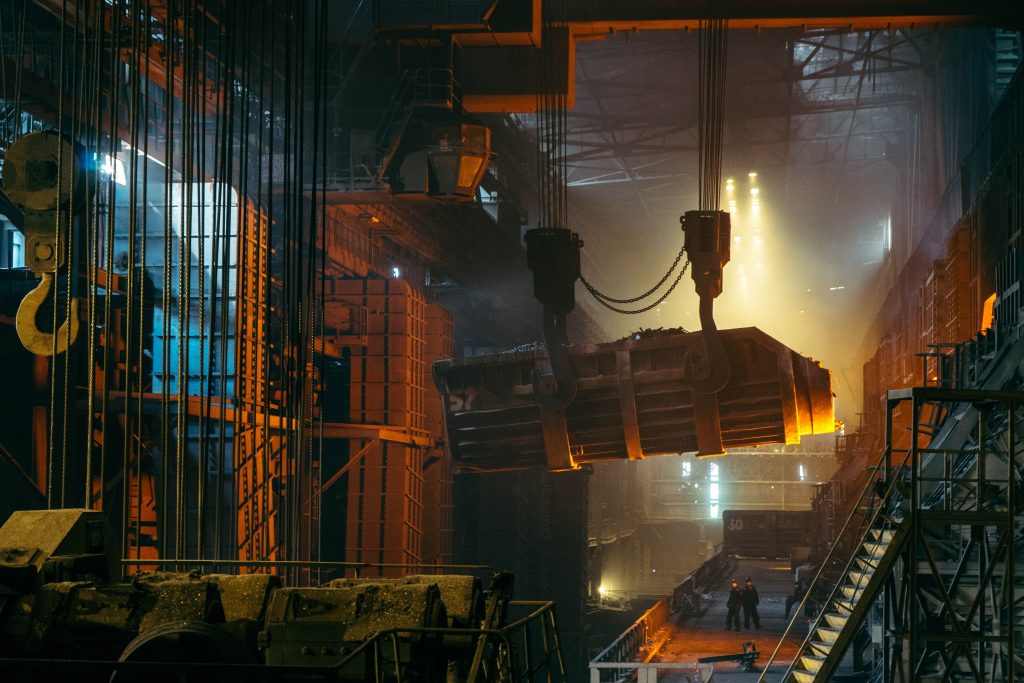
Metal is tough stuff that needs to be exposed to extremely high temperatures before it begins to melt, and every metal has its own melting point. When you are working with metal, you need to know the melting point of the material you’re using. In some cases, for example at a foundry, where metals are melted down and cast into objects, workers need the metal they are working with to melt at relatively-low temperatures. In other cases, such as aerospace engineering, workers need to know their metal components definitely won’t melt when exposed to very high temperatures, such as those from a plane’s jet engine.
What metals are the most heat resistant?
In applications such as the aeroplane design mentioned above, resistance to heat is crucial, and a group of specialist materials called refractory metals are used. Refractory metals, including tungsten and rhenium, are extremely hard at room temperature and have a melting point of over 2000°C. They’re so resistant to heat that when they’re used to fabricate components, instead of being melted down, a process called powder metallurgy is used, in which the metal is reduced to a powder rather than heated until it becomes liquid. A metal’s unique melting point is such an important characteristic of the material that in science, the melting point is often used in experiments to identify unknown metals.
How are high metal temperatures measured?
When we talk about metal melting points, we’re talking about seriously high temperatures, where a bog standard thermometer simply wouldn’t cut it. In fact, as most thermometers use plastic and / or glass, they’d probably disintegrate in most situations where metal is melting. Even if a thermometer could survive this kind of heat, the reading would be way off its scale. That’s where the pyrometer comes in: a pyrometer is a specialist device for measuring extremely high temperatures. More basic models involve a probe that is inserted into a furnace where metals are melting, but technology means that there are now many different kinds of pyrometers on the market, including infra-red ones that don’t even have to touch the metal or the furnace itself.
Exactly how hot are we talking here?
It’s difficult to imagine some of the extreme temperatures that it would take to melt most metals. Think about the fact that an air temperature of 32°C makes for a very hot day; lead needs to be heated to a temperature of around ten times this (328°C) in order to melt – and lead has the lowest melting point of all the metals! Similarly, think of the standard UK oven. If you’ve ever impatiently cranked your oven up to full blast and turned a pizza into an inedible, solid disc, you’ll know that the highest setting (usually around 280°C) is very hot indeed. Now, try to imagine a temperature nearly seven times hotter than that and you’ll have the melting point of chromium, which melts at a sizzling 1860°C. Then there’s tungsten, that extremely heat-resistant refractory metal. If you wanted to melt that down, you’d need to heat it to an unbelievable 3400°C, more than 12 times the top temperature of your kitchen cooker.
Melting points by metal
Whether you’re a farrier who needs to melt horseshoes into the perfect shape to fit a pony’s hooves, or an engineer working with heat-sensitive electronics, it’s important to have some knowledge of the melting points of the materials you’re working with.
Here’s a list of the melting points of some common metals:
- Aluminum: 660°C (1220°F)
- Brass: 930°C (1710°F)
- Chromium: 1860°C (3380°F)
- Copper: 1084°C (1983°F)
- Gold: 1063°C (1945°F)
- Cast Iron: 1204°C (2200°F)
- Lead: 328°C (622°F)
- Nickel: 1453°C (2647°F)
- Platinum: 1770°C (3218°F)
- Silver: 961°C (1762°F)
- Carbon Steel*: 1425-1540°C (2597-2800°F)
- Stainless Steel*: 1375 – 1530°C (2500-2785°F)
- Titanium: 1670°C (3038°F)
- Tungsten: 3400°C (6152°F)
- Zinc: 420°C (787°F)
*These metals are alloys, i.e. they are made with a combination of elements. The proportion of elements within individual alloys could affect melting points.

